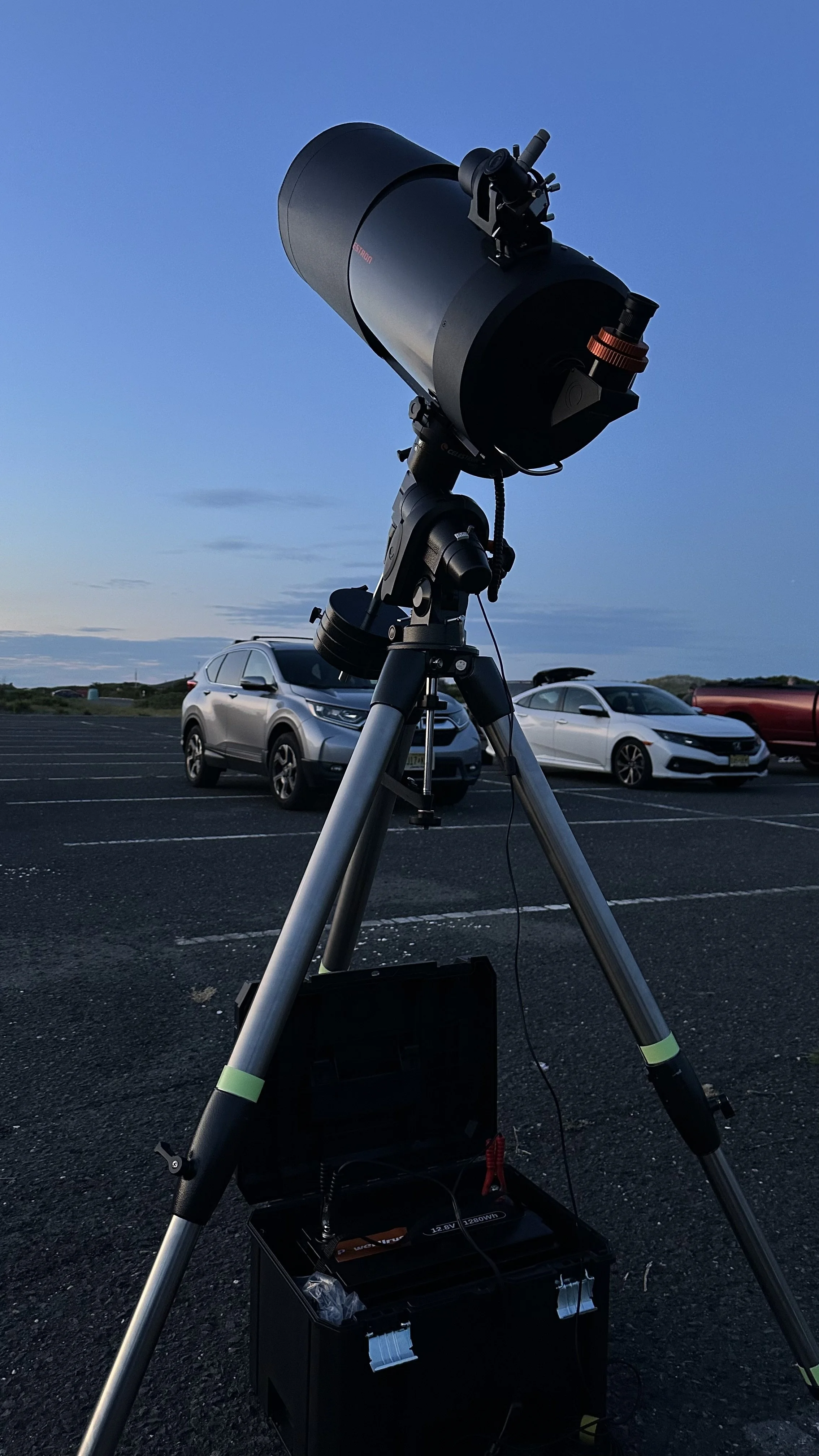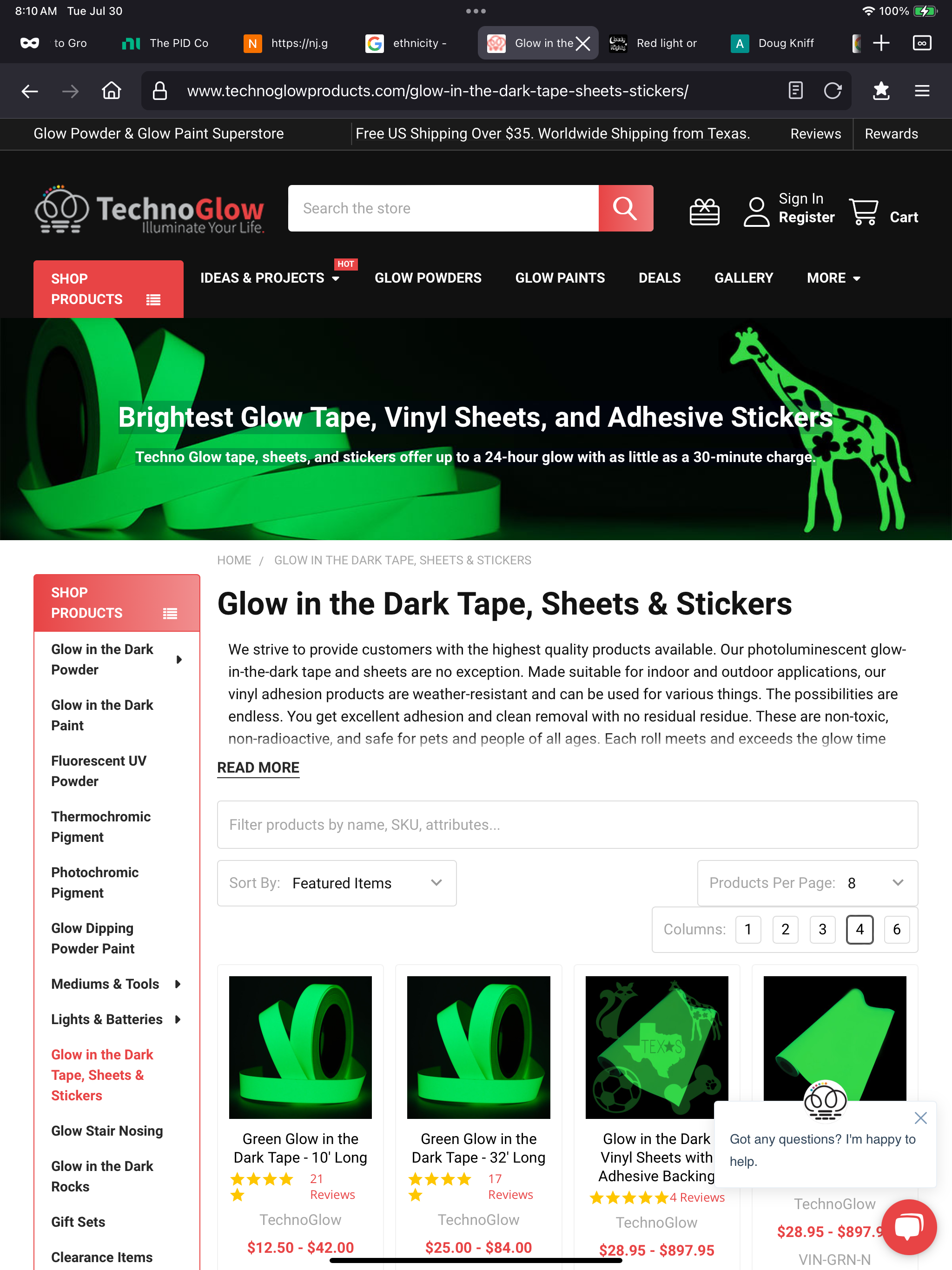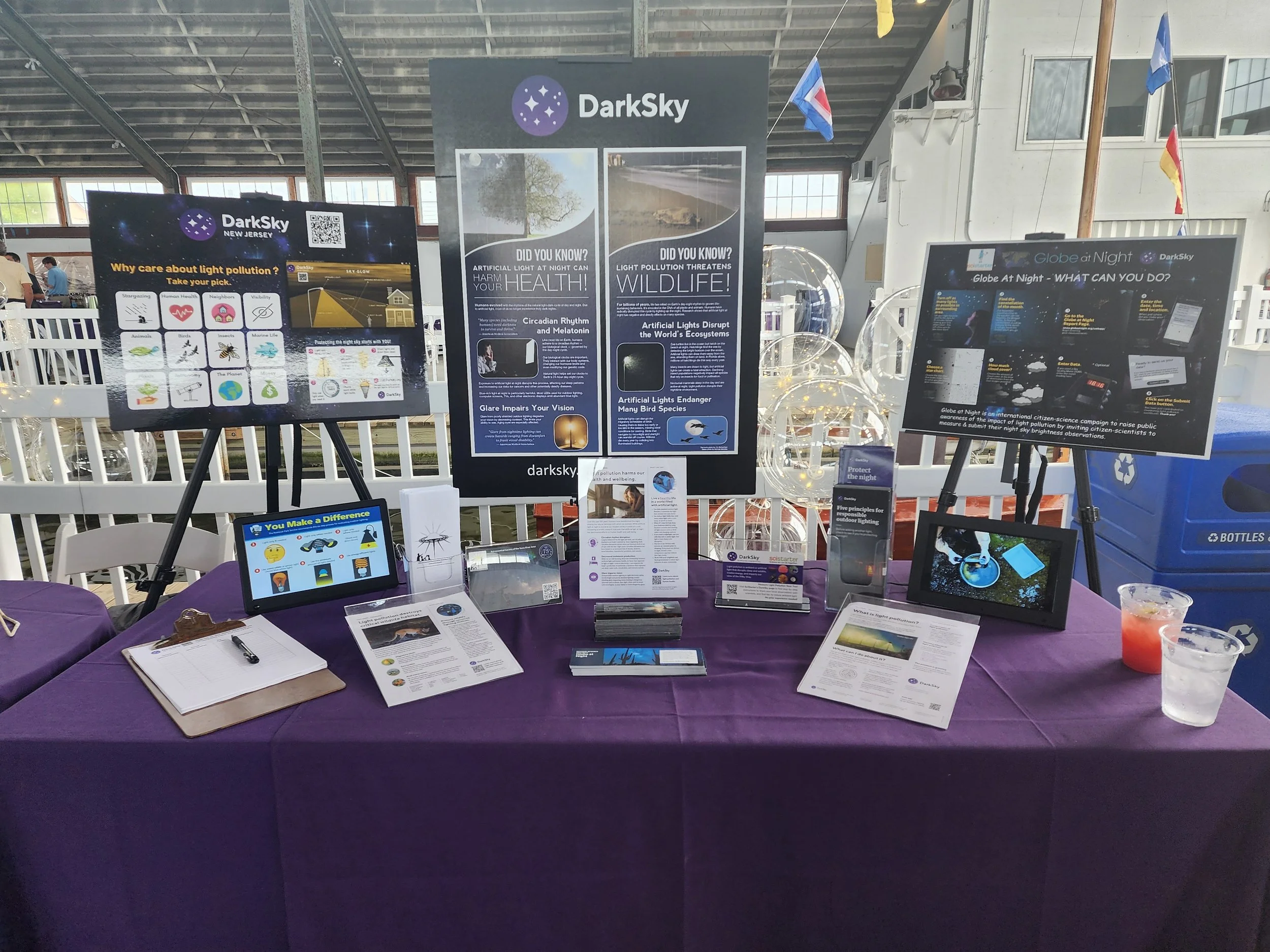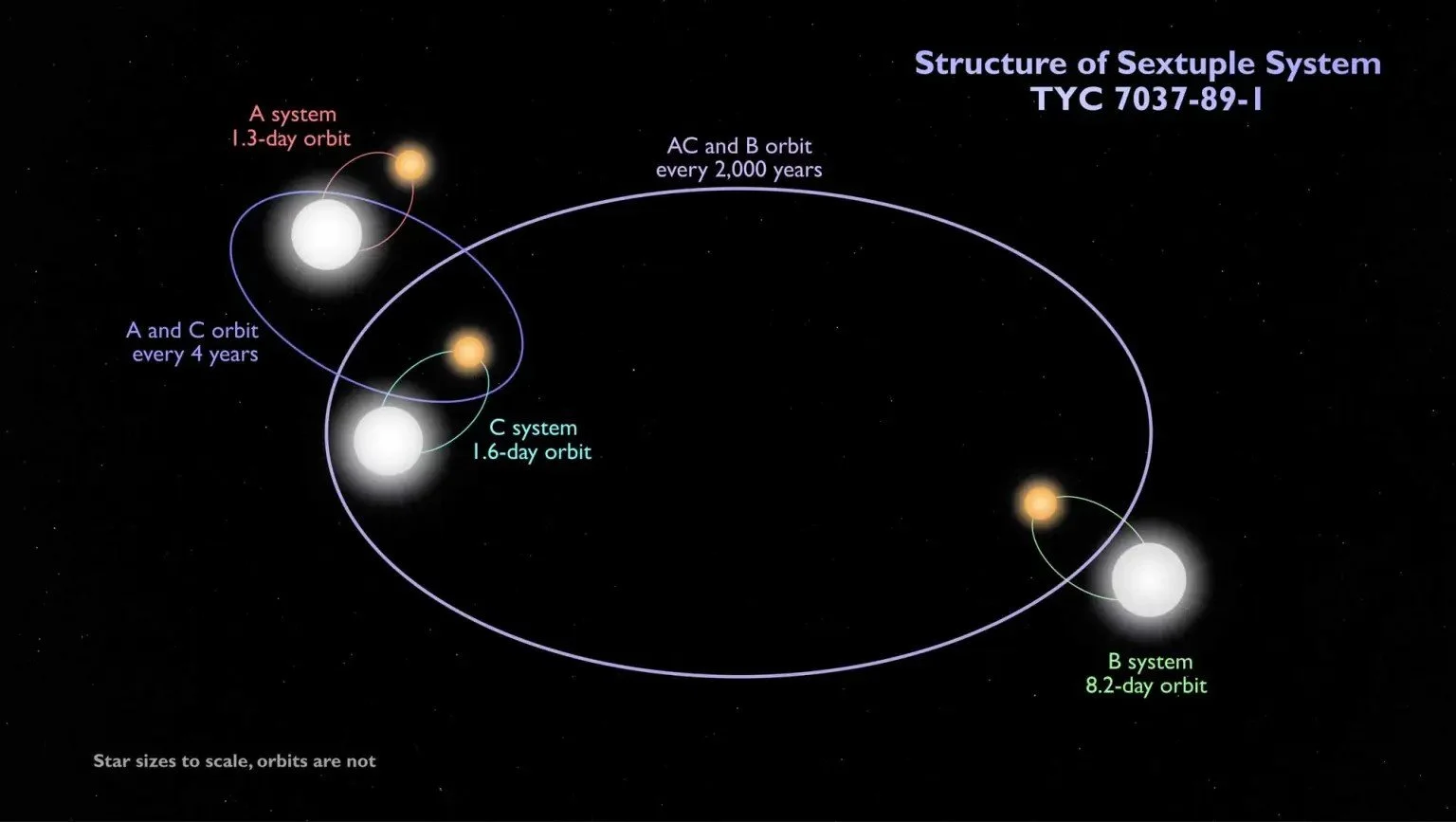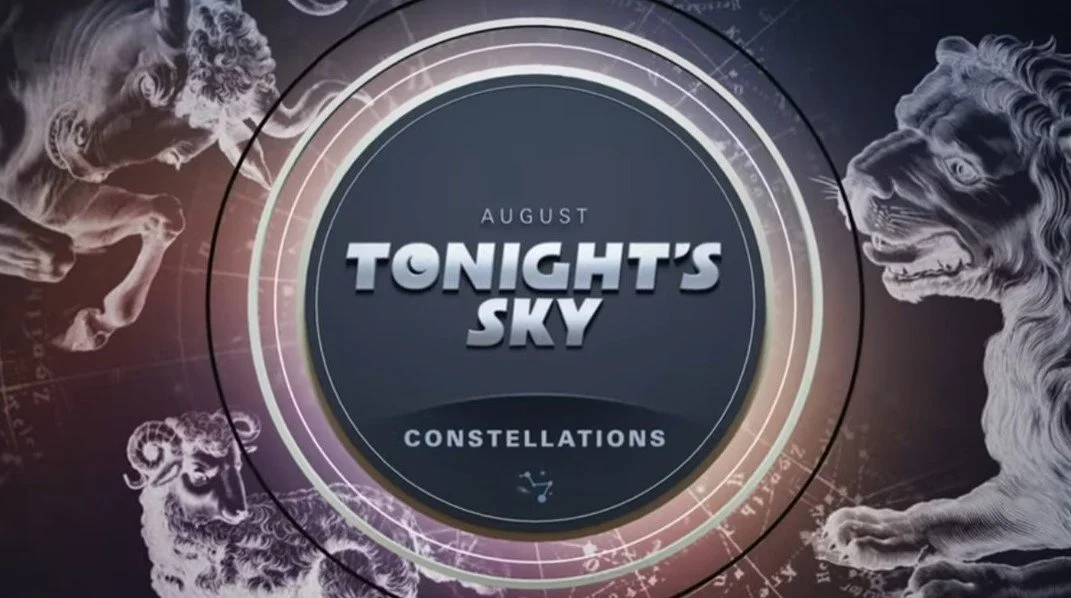Astral Projections Online August 2024
Check our Website for updated content at www.astra-nj.com
Club Presentations Wanted:
Does anyone have any astronomy items of interest to share with the membership?
Please let us know at Club Contacts.
Club dues and membership. If you renew after March 31 you will be renewed as a new member.
ASTRAL PROJECTIONS ONLINE (APO for short) is an email-linked publication for members only. If you exit APO to the club website or other resources you will need to use the emailed link again to get back to it. If you wish to retain a copy please bookmark or refer back to the email. We will make all efforts to post by the first week of the month.
Submissions Welcome: Members are invited to submit articles, photos, news, or stories for inclusion with Astral Projections Online. Please contact the ASTRA Webmaster.
Event Calendar
EVENT Cancellations: Members will receive email notifications of an event cancellation.
Upcoming August ASTRA Meeting
ASTRA's next meeting will be Friday, August 9, 2024, at 9 PM EST. This will be an observing meeting at Island Beach State Park Area#2.
We will be back at the Planetarium in September.
Upcoming Star Parties
Island Beach State Park Area #2 - August 9 - 9 PM to 11 PM
Jakes Branch - August 10 - 9 PM to 11 PM
Cloverdale Farm - August 24 - 8:30 PM to 10:30 PM
Island Beach State Park Area #2 - August 30 - 8:30 PM to 10:30 PM
Jakes Branch - September 7 - 8:30 PM to 10:30 PM
Upcoming Public, County & State Park Presentations 2024
Public Outreach Presentations, if any member wishes to support ASTRA outreach efforts with the public, please let Vinny, Ro, or Jim know of any interest. Additional help for these events is always appreciated.
County and State Park presentations require a registration fee, call the hosting park to reserve.
None at this time.
Website Updates …
Please visit our club website. We continue to have additional updates, if some content would be useful to members please let us know.
“You cannot look up at the night sky on the planet Earth and not wonder what it’s like to be up there amongst the stars. And I always look up at the moon and see it as the single most romantic place within the cosmos.”
Toms Hanks - Actor
July ASTRA Meeting - August 9
Our meeting for August will be an observing meeting at Island Beach State Park, Area #2.
Event Reports
July 6 Star Party
On July 6, we had a star party. The images below are from Jakes Branch. Unfortunately, the weather did not cooperate with us. Hoping for a better August.



July ASTRA Meeting Summary
The ASTRA Observing meeting for July, unfortunately was canceled due to weather. Hoping we will get the August Observing meeting in.
County Park Presentations
We did not have any county park presentations for June.
Members Submitted Articles & Items
Whatever it is, how you tell your story online can make all the difference.
Contact: Jim Webster, ASTRA President and Webmaster, regarding submissions.
Night Vision - Go for the Green
Want to give your telescope some protection from being bumped into and still maintain your night vision? The article and resources supplied are from ASTRA member Gary Kester.
Concerning the preservation of scotopic (night) vision; The intensity (brightness) of the light used to read charts is more important than the color. Inexpensive polychromatic green LEDs, which closely match the spectral response of the human eye, are now widely available. In combination with the popularity of LED astrolights, the deep sky observer now has the opportunity to drastically cut their visual recovery time and improve their perception of faint objects.
Pictured here is Gary’s telescope with Green Fluorescent Tape. Batteries are not required.
The main article can be found at ASTROMAX.
The Green Fluorescent Tape can be found at technoglowproducts.com
The Moon: Our Nearest Neighbor
Let’s explore some interesting features, facts, or myths about our nearest neighbor, the Moon. Without it, life on Earth would be totally different, if not at all.
Lunar Caves have been in the news recently …
We are revisiting Lunar Caves again, as they have made an appearance in the news recently. It is now being explored as a possible shelter for man for long stays on the moon.
At the region where Apollo 11 landed, a vast cave system was discovered, that could potentially host future lunar bases. Shielded from cosmic rays and with stable temperatures, these caves are more than just shelters; they're stepping stones to sustained life on the Moon.
Lunar caves and lava tubes are lava tubes on the Moon formed during the eruption of basaltic lava flows.
When the surface of a lava flow cools, it hardens and the lava can channel beneath the surface in a tube-shaped passage. Once the flow of lava diminishes, the tube may drain, forming a hollow void. Wikipedia
An international team of scientists using data from NASA’s LRO (Lunar Reconnaissance Orbiter) has discovered evidence of caves beneath the Moon’s surface with the suggestion of a network of them.
Outreach material below is distributed free for public outreach.
Around The Web
Adirondack Sky Center
Astrophotography Conference
This four-day workshop event is at Little Wolf Pond, Tupper Lake New York. It’s a six to seven-hour drive from Toms River. The price Is very reasonable and if lodging is needed check out cabins at Curtigay Cove. It is a two-minute drive from the Sky Center.
Curtigay Cove cabin rental, speak with Jim Webster.
VISUAL OBSERVING VS. SMART TELESCOPES — FINDING HARMONY
The latest smart-scope astrophotography craze opens the door to some incredible opportunities for both beginners and seasoned observers. Smart telescopes also make the hobby available to those who have physical and visual deficiencies. It’s a growing area of the hobby that has many telescope manufacturers jumping on board.
For more visit Sky and Telescope.
Smart telescopes provide users with a fun, interactive astronomy experience that anyone can engage in. These all-in-one units encapsulate the complicated world of astrophotography into one system, making this hobby incredibly accessible to anyone with a smart device. Enjoy the night sky from anywhere, as the portable design makes it perfect for traveling to dark skies or to your next star party. Integrated with powerful optics, sky tracking abilities, and imaging equipment, these simple setups produce stunning astroimages of our Moon, the Sun, the planets, and deep-space objects! … All the available models can be found at local vendor, Highpoint Scientific.
The latest of the smart telescopes to jump into the mix is from Celestron. This particular one will be the largest and is tuned to those wanting better astro images then the ones that are already on the market.
Stargazing and Astroimaging Redefined: Celestron Origin is an intelligent, all-in-one home observatory that captures stunning views of faint, deep-sky celestial objects and delivers them to your phone or tablet. The images you capture in seconds look better than what you’d see in the eyepiece of a much larger telescope under much darker skies.
For more visit Celestron.com
The use of SMART-Telescopes in ASTRA is growing. We have several members with them and in use for Star Parties.
The Perseids are back
August's Perseid meteor shower is expected to put on a great show this year! The best meteor-watching hour is 1 a.m. PDT (4 a.m. EDT) on the morning of August 13, when up to 100 meteors per hour may be visible from a dark sky.
The quarter moon sets after 11:30 PM, as long as the weather holds should be good viewing. The only concern would be for those of us that still have to work in the morning.
For more on the Perseids check out Sky & Telescope video and NASA “What’s Up” in this APO publication.
Dark Sky News
Dark Sky New Jersey is a joint venture of Dark Sky International Advocates and Delegates from New Jersey and the New Jersey chapter of the Sierra Club Dark Sky team. If there is an interest in helping, please let Jim Webster know.
State Bill A2196 passed unanimously in a vote before the entire assembly on June 28, 2024.
Still no word on the Senate side.
We recently supported a Save Barnegat Bay event. The event was listed as three hundred guests. Many of whom stopped by at the DarkSky New Jersey table.
On the lighter side of astronomy …
For more go to NASA Jet Propulsion Laboratory webpage: What’s Up: Skywatching Tips From NASA
This article and images are distributed by NASA Night Sky Network
The Night Sky Network program supports astronomy clubs across the USA dedicated to astronomy outreach.
Visit nightsky.jpl.nasa.gov to find local clubs, events, and more!
August Night Sky Notes: Seeing Double
By Kat Troche
During the summer months, we tend to miss the views of Saturn, Jupiter, and other heavenly bodies. But it can be a great time to look for other items, like globular star clusters such as Messier 13, open star clusters such as the Coma Star Cluster (Melotte 111), but also double stars!
Mid-August night sky constellations with the following multiple star systems highlighted: the Double Double in Lyra, Albireo in Cygnus, Polaris in Ursa Minor, Mizar and Alcor in Ursa Major. Credit: Stellarium Web
What Are Double Stars?
If you have seen any movies or read any books that refer to having two suns in the sky, that would be a double star system. These star systems typically come in two types – binary and optical doubles. Binary stars are two stars that are gravitationally bound and orbit each other, and optical double stars only appear to be close together when viewed from Earth, but in reality, are extremely far apart from one another, and are not affected by each other’s gravity. With a small telescope, in moderately light polluted skies, summer offers great views of these stellar groupings from the Northern Hemisphere:
· Double Double: also known by its technical name, Epsilon Lyrae, this multiple-star system appears as one star with naked-eye observing. But with a small telescope, it can be split into ‘two’ stars. A large telescope reveals Epsilon Lyrae’s secret – what looks like a single star is actually a quadruple star system!
· Albireo: a gorgeous double star set – one blue, one yellow – in the constellation Cygnus.
· Polaris: while technically a multiple-star system, our North Star can easily be separated from one star to two with a modest telescope.
Mizar and Alcor: located in the handle of the Big Dipper, this pair can be seen with the naked eye.
This schematic shows the configuration of the sextuple star system TYC 7037-89-1. The inner quadruple is composed of two binaries, A and C, which orbit each other every four years or so. An outer binary, B, orbits the quadruple roughly every 2,000 years. All three pairs are eclipsing binaries. The orbits shown are not to scale. Credit: NASA's Goddard Space Flight Center
Aside from looking incredible in a telescope or binoculars, double stars help astronomers learn about measuring the mass of stars, and about stellar evolution. Some stars orbit each other a little too closely, and things can become disastrous, but overall, these celestial bodies make for excellent targets and are simple crowd-pleasers.
Up next, learn about the Summer Triangle’s hidden treasures on our mid-month article on the Night Sky Network page.
Let’s Explore Space - What’s in the Sky July 2024
Since Constellation Corona Borealis keeps being discussed with the pending Nova event, we will focus on where it is.
M20 - Trifid Nebula
Coordinates: RA 18h 2m 23s | Dec -23° 1′ 48″
Distance to Earth: 5,200 light years
Magnitude: 6.3
Radius: 21 light years
Age: 300,200 years
Types: Emission and Reflection Nebula
Apparent dimensions (V): 28 arcmins
The Trifid Nebula is an H II region in the northwest of Sagittarius in a star-forming region in the Milky Way's Scutum–Centaurus Arm. It was discovered by Charles Messier on June 5, 1764. Its name means 'three-lobe'. Wikipedia
M20 is a fine sight in 7x50 or 10x50 binoculars, appearing as a fuzzy circular diffuse shape. A small 80mm (3.1-inch) telescope hints at dark lanes spreading from the center of the nebula, especially when viewed under dark skies. With a 150mm (6-inch) or 200mm (8-inch) scope, the Trifid becomes an exciting object. Its irregular shape is visible, along with the trisecting dark lanes, exquisite twists/turns, and under good conditions hints of color. Of course, to really appreciate the full beauty of this object an image or photograph is required.
Tonight’s Sky: August
In August, a flock of star-studded figures soars overhead. Look for the Vega and Lyra constellations, which point to Epsilon Lyrae and the Ring Nebula. You can also spot three bright summer stars: Vega, Deneb, and Altair, which form the Summer Triangle. Keep watching for space-based views of these and other stars and nebulas.
Visit the STScI which produces Hubblesite.org video overviews for Tonight’s Sky.
They can be found both on Facebook and stsci.edu.
Submissions Welcome
Members are invited to submit articles, photos, news, or stories for inclusion with Astral Projections Online. Please contact the ASTRA Webmaster.


